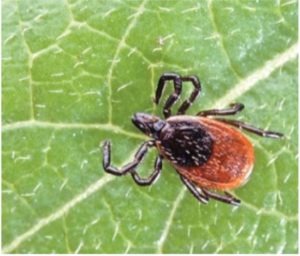Tick Season Has Arrived in Texas
As weather starts warming up, we are heading into prime tick season. With tick season comes more cases of Lyme disease. Since Lyme disease is quite serious and May is National Lyme Disease Awareness Month, we wanted to educate you about Lyme disease as it relates to pets. The more you know, the easier it will be for you to prevent the disease and keep your pet healthy.
What Is Lyme Disease?
Lyme disease is a bacterial illness transmitted to humans, dogs, and other animals by Deer Ticks. When a tick bites a person or an animal, the bacteria gets transmitted into the victim’s bloodstream. Dogs, horses and cattle are the most affected domesticated animals to suffer from Lyme Disease.
The most common symptoms of Lyme disease in dogs are:
- Lameness
- Swollen lymph nodes
- Joint swelling
- Fatigue
- Loss of appetite
The above symptoms typically occur at the chronic disease stage and as early as 2-5 months after infection, although signs can develop much later. If Lyme disease is left untreated, symptoms can lead to kidney failure, serious neurological impacts and cardiac problems. Lyme disease can be fatal in the worst cases.
Environments to Be Aware Of (Where Do Ticks Live?)
You will most commonly find ticks outdoors in leaf litter, shrubs, tall grass or bushes. Ticks attach and cling on to passing animals. For this reason, it is important to check your pet for ticks after you’ve spent time outdoors. If you feel a small bump on your pet, be sure to part your pet’s fur and take a closer look.
How to Remove Ticks from Pets
Myth buster: applying heat, peppermint oil or Vaseline to the external dorsal shield of a tick will assist in its removal. Nope!
What to do: Using tweezers grasp the tick by the head and pull with steady pressure without twisting. Clean the area thoroughly with antimicrobial soap and be sure there are no remaining tick mouthparts still embedded at the bite site.
For additional information on safe tick removal, watch this video from PetMD below.
Lyme Disease Diagnosis and Treatment
If you notice symptoms of Lyme disease in your pet be sure to bring them into the office right away. Diagnosis is made by a combination of history, physical signs, and blood tests. Using this combination, we can see if a dog has been exposed to the bacterium that causes Lyme disease.
Treatment includes antibiotics, usually for at least 30 days. However, it is essential to follow our advice regarding follow-up care after diagnosis and treatment.
Lyme Disease Prevention
To do your best to prevent Lyme disease in the first place, do the following:
- Routinely examine your pet for ticks after visiting terrains that support tick infestation.
- Ask your vet about orally and topically administered tick prevention options. These can be given monthly to prevent tick attachment and feeding, and are considered to be the gold standard in preventing tick-borne diseases.
We can help you choose the best products for your pet. Just give our office a call at: (979) 693-0123.
Sincerely,
Dr. Kim Stewart
College Hills Veterinary Hospital
